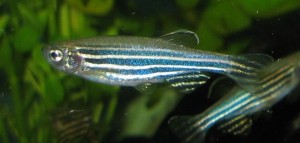FRIDAY, 30 APRIL 2010
Rainer Friedrich's group at FMI used advanced optical testing techniques to analyse the response of Zebrafish to gradual changes in odour character and strength. The results, published in Nature this month, showed that although the neurological patterns produced by the brain are generally invariant with odour intensity, they undergo very distinct changes as the smell is subtly altered in character [1]. This suggests that odours are represented discretely by neuronal circuits in the brain, rather than by a continuous spectrum. As one odour evolves into another, a switching point occurs within the olfactory bulb where certain neurons are turned off and others turned on which gives rise to a new response pattern reflecting the new odour type.Categorising smells in this way allows the brain to focus on certain groups whilst ignoring others. Sommeliers, for example, are able to distinguish between the delicate notes of a wine whilst simultaneously ignoring unrelated odours in the air such as perfume or cooking food. There is a fine balance between extracting the required information without being distracted by background smells and this method of discrete odour characterisation makes this possible. Friedrich believes that similar principles could also underlie other fundamental processes in the brain such as decision-making. Decisions are also considered to be discrete and are made based upon the information which is available, however sometimes a tiny addition can catalytically affect the final result.
Written by Nicholas Gibbons

